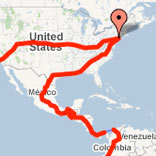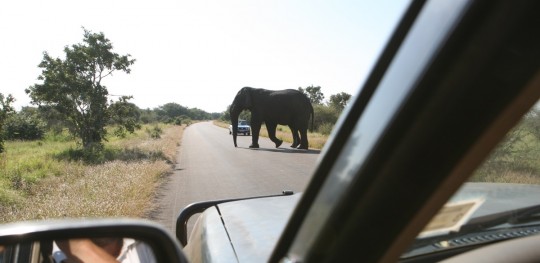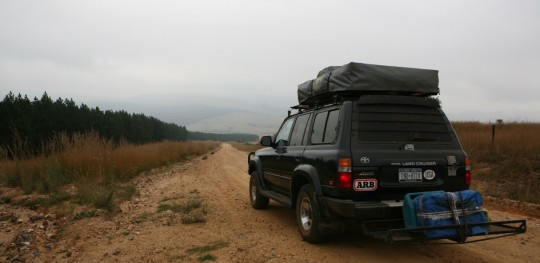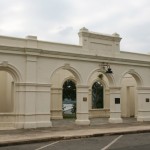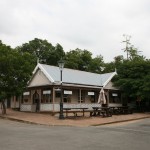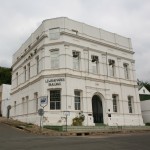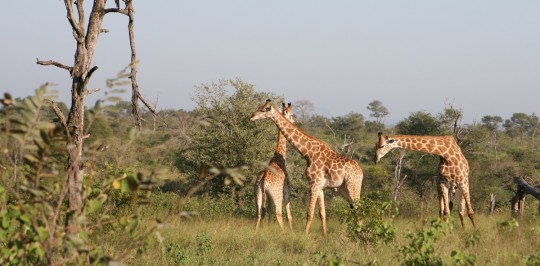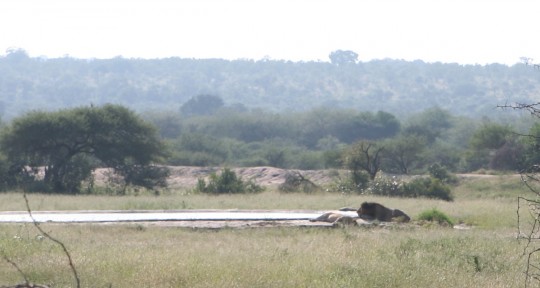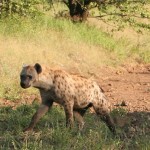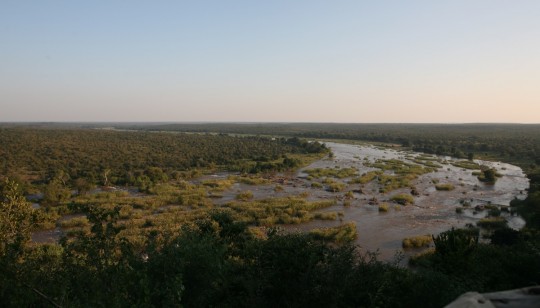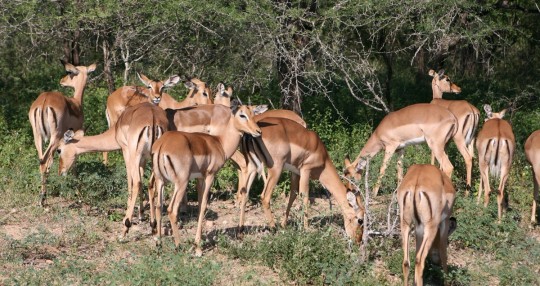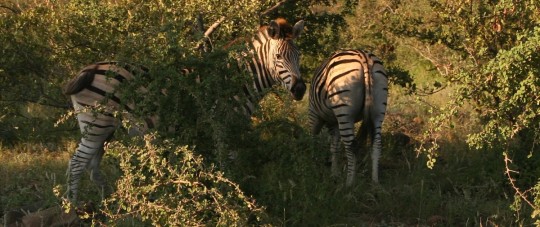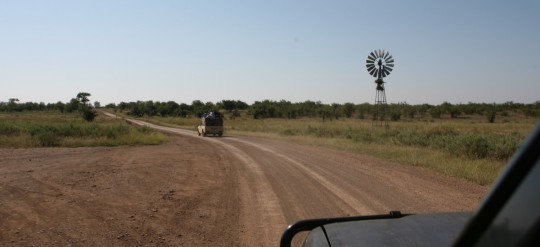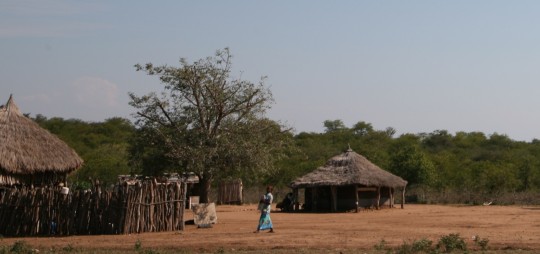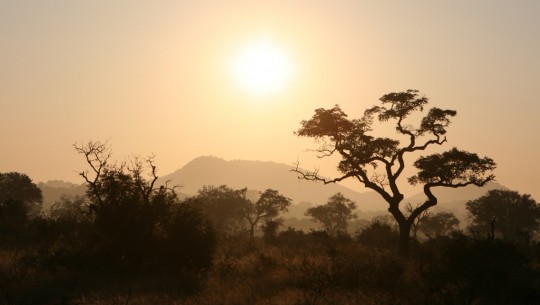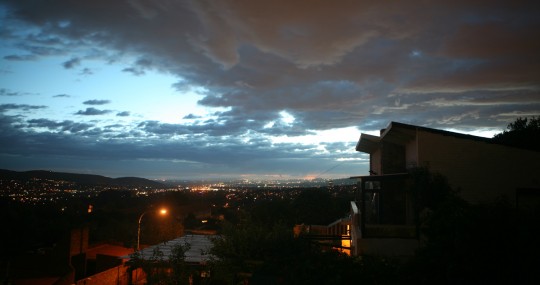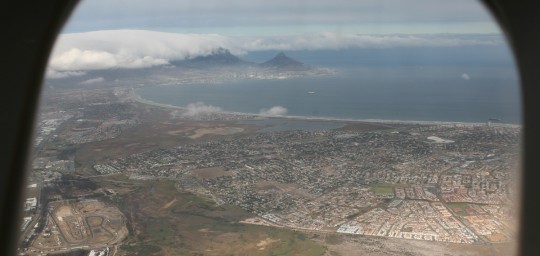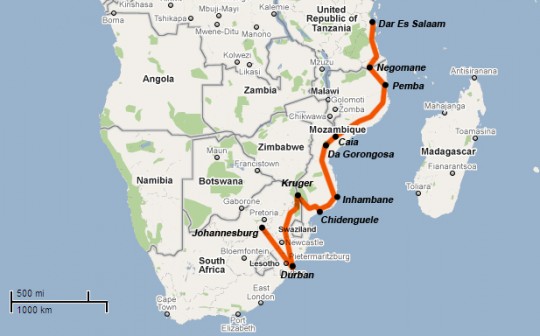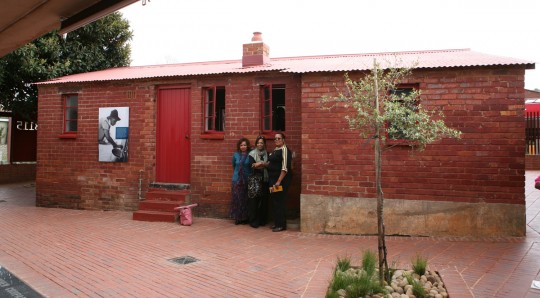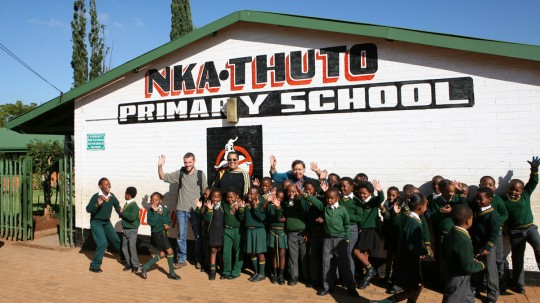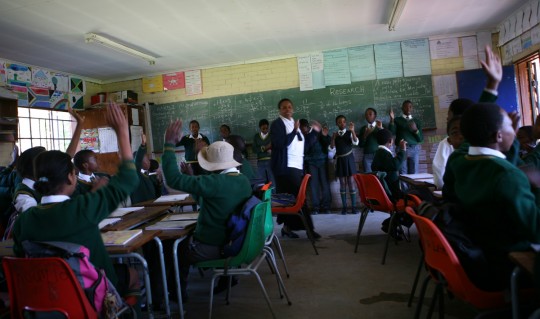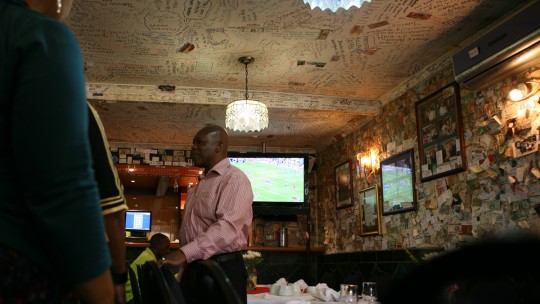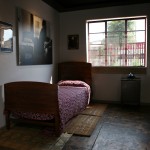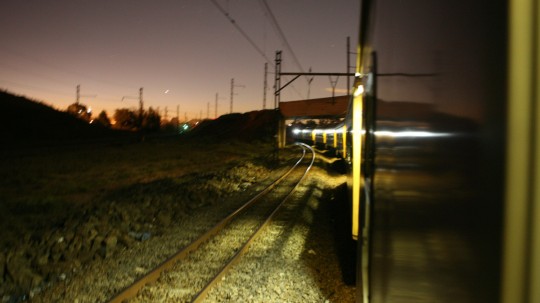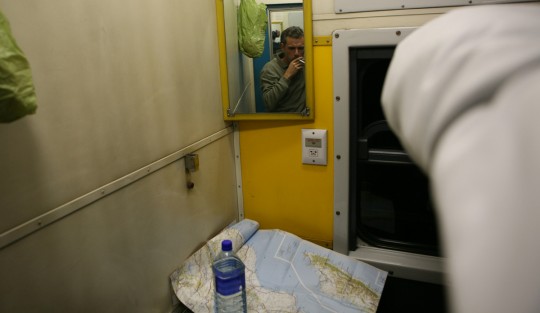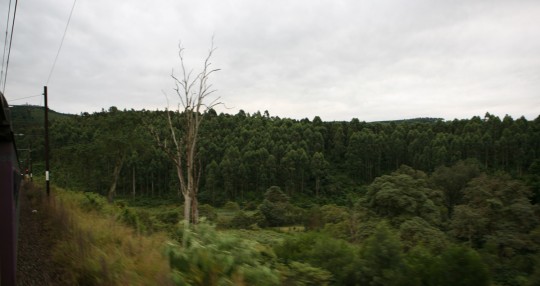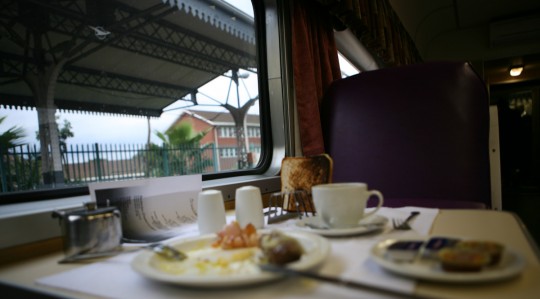- Home
- About Nick
- Maps
- People helping the expedition
- Expenses breakdown
- Truck and equipment (Sept. 16)
-
14,000 miles from New York City to the first elephant
Another early start the following day allows me to see more wildlife. The sun raise early at around 6 a.m., and soon enough, temperatures and humidity are at the highest. Most days, the temperature is more than 30 degrees C.
After riding dirt roads for the first two hours of the day, I am out of the Saint Lucia Wetlands Park, due west in order to avoid Swaziland. My passport is almost full, and until I get another one – probably in Tanzania – I need to avoid too much border crossings.
As I go north following the Swazi border, I gain in elevation, and soon enough, I am deep into huge forests of pines. Eventually, I stop in Amsterdam for the night, where a white farmer let me camp on his land.
Towns up there are simple, but you can feel the timber trade put a little bit of extra money in pockets, compared to other places I crossed.
I leave in the morning, and use dirt roads through the forest to reach Barberton, a city of historical interest. Of commercial interest as well, for me, since I need to get a bit of groceries, to cover for my needs while I will be traveling for few days through Kruger National Park. When it is done, I visit the town, and discover the history of this old gold mine site. Some preserved Victorian homes as well as elegant buildings make the place an interesting stop. Sights include the De Kaap Stock Exchange building, built in 1887 site of the first gold exchange in South Africa. In the same street, the Globe Tavern and the Lewis and Marks building are from the same period.
I have lunch there, and get back in the truck to drive a bit more and reach the park gate at the end of the afternoon. At the Malelane gate, a hotel let me camp in the backyard for US$13.
At 5:30 a.m., monkeys can witness once again a French guy coming out of his tent, tired but excited about seeing more of Africa. Extended time in Buenos Aires, Johannesburg and Durban reinforce my pleasure of being out camping.
For around US$ 40, I can enter the park, and pretty soon, I see many animals, including giraffes.
I spend the day driving north across the park, and find a small rustic camp where electric wires protect travelers from omnipresent hyenas. It cost me US$10 to stay here for the night and have a nice bush camping experience.
After a night in the camp called Balule, I get again an early start to see hippos, zebras, elephants and hundred of antelopes.
The most impressive of course are elephants. You can really see a lot of them here.
Around 11 a.m., I go east and after an hour, I reach the border with Mozambique. This is a straight forward affair, since there are not many people crossing at this location. The visa cost me US$25.
Once I pass the border, I find myself in the Limpopo Park, the equivalent of Kruger on the Mozambique side, and have to pay US$10 to cross it. It is done in two hours of dirt roads, which become a badly potholed tar road.
After hours of driving, and after dark, I am back on the Indian Ocean coast, looking for a camp ground. I find one on the beach in Xai-Xai, where I am happy to stop, exhausted by the long drive (US$ 8.50).
Mozambique is still recovering from a traumatic past. Formerly a Portuguese colony, the country went through a war of independence, and a civil war ending in 1992. Natural disasters also took a toll on the inhabitants.
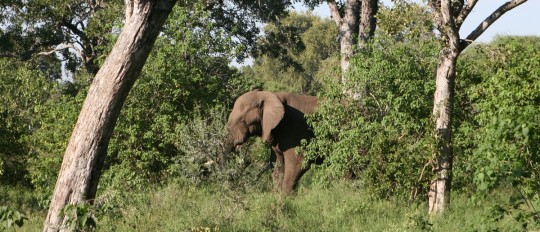 Infrastructures are in bad shape, even so the country seems to be on the rise, and gets a bit more tourists every year. It should be an interesting trip of around 2,000 miles across the country. As previously thought, it looks like finding spots for camping will be harder in Africa compared to Latin America. I stick to camp grounds at this point, and will see how things change while I am going north.
Infrastructures are in bad shape, even so the country seems to be on the rise, and gets a bit more tourists every year. It should be an interesting trip of around 2,000 miles across the country. As previously thought, it looks like finding spots for camping will be harder in Africa compared to Latin America. I stick to camp grounds at this point, and will see how things change while I am going north. -
Taking plane, cabs and train from Buenos Aires to Durban
I flew to Johannesburg the night of April 14. In the morning of the 15, the plane stopped in Cape Town for an hour and an half, and around 1 p.m., I arrived at destination.
The country is getting ready for the World Cup, and the airport is a mess. As a result, I can’t locate the bus going to the city center, and have to get a ride with one of the many not-so-official cab you find there. It costs me US$30 to get in the city center.
The immense city is born in 1886 of a huge gold rush. The population is still divided between the highly secure primarily white suburbs and the blacks in townships and squatters camps. Dr. Joy Scott, one of the American followers of the blog invited me to spend few nights at the Wits University campus, one of the biggest universities in Africa and one of the rare multiracial enclaves during apartheid. I spend three days there, preparing my upcoming travel. I get some maps, and I try to trace the route ahead, getting information on the internet about dirt roads, river crossing and availability of visa at country borders. Message boards are useful, as you get first hand information from people who drove the roads recently.The route is getting more precise. I will get my truck in Durban, follow the coast and go north to the Kruger Park before crossing to Mozambique from there. Dirt roads should lead me south-east back to the coast at Chidenguele. I will travel north to the Parque Nacional da Gorongosa after enjoying the beaches around Inhambane.
In Caia, I will cross the Rio Zambeze and continue north-east and see Pemba on the coast before going back inland and cross the Rio Rovuma – marking the border with Tanzania – in Negomane, taking advantage of the new bridge. Few days after, I should be able to make it to Dar Es Salaam, the capital of Tanzania.
Days go by, and it is time for me to go visit Jerome Delay, another AP-colleague who I worked with in Paris, and is now the chief of photo for Africa. He lives in Johannesburg since 2005 with Benedicte Kurzen, photographer as well. You can see examples of the work they do here and here.
I spend few days with them, and Jerome help me out getting my stuff ready. He takes on his time to drive me around the city. I should have rent a car when I arrived at the airport, as you can’t navigate Johannesburg without a vehicle. The city is dangerous, and is reminiscent of Los Angeles, where you don’t see a soul walking the streets. Violence seems to have decreased in the last years, but when everybody tells you that you should not go out by foot on your own, you begin to feel a little bit paranoiac.
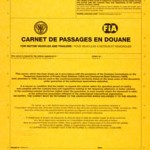 We go to the Automobile Association, where I have to make changes to my Carnet de Passage, the equivalent of my truck passport. Since I decided to change my route from the West to the East coast, I have to add the new countries to the document. They are really helpful there, and it is done in ten minutes. If you find yourself in a similar case, contact ¬¬ Meliza Chegwidden (MChegwidden [AT] AASA.CO.ZA), she is the best. Changes are free while it would have cost US$500 in North America.
We go to the Automobile Association, where I have to make changes to my Carnet de Passage, the equivalent of my truck passport. Since I decided to change my route from the West to the East coast, I have to add the new countries to the document. They are really helpful there, and it is done in ten minutes. If you find yourself in a similar case, contact ¬¬ Meliza Chegwidden (MChegwidden [AT] AASA.CO.ZA), she is the best. Changes are free while it would have cost US$500 in North America.Meanwhile, I get new information from Jerome and his friends. It looks like getting visas for Sudan and Saudi Arabia is now easier. I also get confirmations that there are boats three times a week between Sudan or Eritrea to Saudi Arabia. It seems that it would work for me.
Also, I spend some time with Dr. Joy Scott and her colleagues who came from the U.S. They visit some schools in Soweto to observe methods of teaching, but primarily to tell them about the methods they specialize in. It is all about identifying gifted kids and to prepare a specific curriculum for them, a method unheard of in Africa where most efforts are directed into getting basic things rolling, like getting electricity in classrooms.
Soweto stands for South Western Township, where four millions people live in 140 square kilometers. It is now wealthiest than it has been, and easy to visit.We spend time in the township and go to eat at world famous Wandie’s, a legendary restaurant close to Winnie Mandela’s mansion. On the menu, spicy oxtail stew and potjie kos which is beef and vegetable stew. Later, we visit the house Nelson Mandela lived before he got arrested in 1956, and hold our breath at the Hector Peterson museum, dedicated to keep the memories of the 1976 Soweto uprising fresh.
Every week on Thursday, there is a train leaving Johannesburg to Durban with sleeping options. I get a small compartment for less than US$40, and at 6:30 p.m., the train departs for its 13 hours trip. You can travel on the Shosholoza Meyl in a seat for US$10, but at this price, I may as well get some sleep, and be in good shape to attack all the formalities to free my truck.
Although it is cold in the train, the trip is much nicer than taking the bus. Shortly after leaving Johannesburg, a bunch of people attack the train, throwing rocks and breaking windows. I hide under the table. The train continues. Looking at other people, it looks like it is business as usual.
The night goes by fast as I read and get a very nice night of sleep. In the morning, I discover a shower in the car, and take advantage of this luxury.
We arrive in Durban a little bit late, and I negotiate a cab ride to the sea front. My plan for the day is to sort out the customs with SARS, the equivalent of the American IRS. I knew it will not be simple, and of course it is not. Few hours later I had navigated several offices with no success. Nobody knows anything. Finally I have no other choice but get a clearing agent who will deal with them, as well as getting a warehouse space where I can unload my truck. I wanted to avoid that to save money, but there is no way around. The bad news is that it will cost me more than US$1,300 to pay the port dues, the container transportation, the warehouse and the agent.
But there is no better options, so I try to stay positive, even when I learn that the boat transporting my truck is late, and will not make it to the port before the following Friday, instead of Monday. After that, the container will be stuck for the weekend. I will consider myself lucky if I can get my vehicle on the Wednesday after that. It will be costly, as I will have to go to a hostel for ten days. Again, there’s nothing I can do, so after I sort out everything I can, I just take a cab to the Nomads Backpacker hostel, which seems nice and cost US$16 a night.
There, I will wait and get ready for more trouble, as I know getting the truck out will not be as easy.
For the kind of journey I am undertaking, I learned soon enough one quality is more important than courage or strength. Patience.


